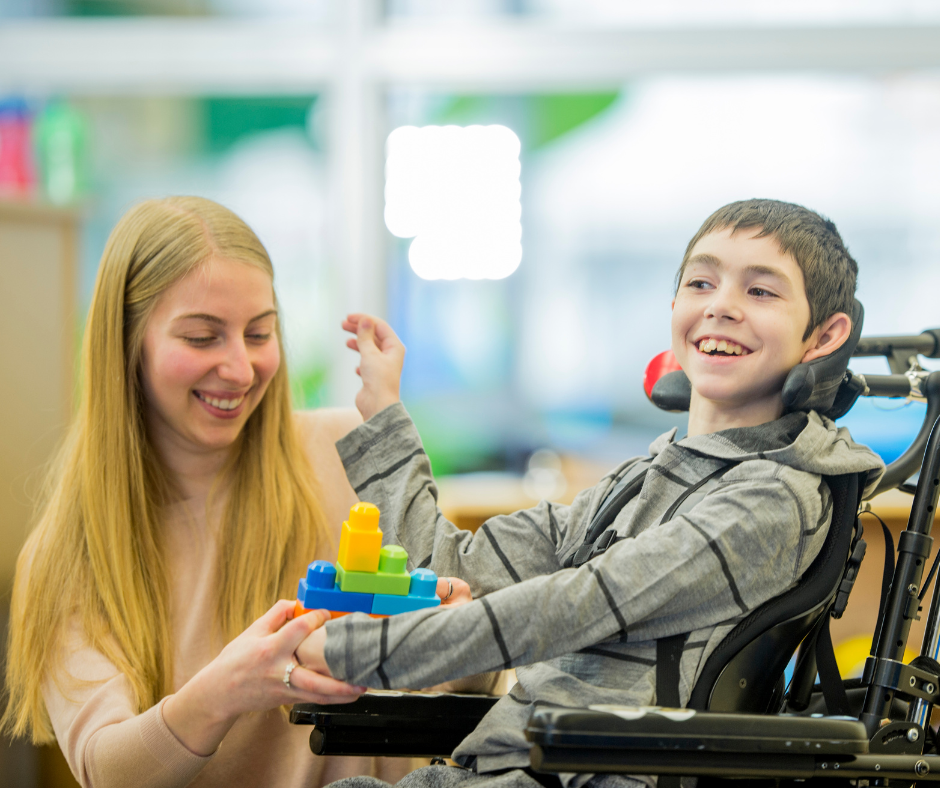
August is spinal muscular atrophy awareness month, and we want to share some valuable information about the disease with you. Spinal muscular atrophy attacks motor nerve cells in the spinal cord, taking away a child’s ability to walk, breathe, and eat. This genetic disease is the number one cause of death in infants.
What Is Spinal Muscular Atrophy?
SMA affects 1 in 10,000 babies and 1 in 50 Americans are a genetic carrier. A defect in the survival motor neuron gene I causes spinal muscular atrophy. This gene’s function is to produce a critical protein that functions in the nerves that control the body’s muscles. When the gene is defective or missing, the nerves slowly die, causing muscle atrophy or life-threatening muscle weakness.
Types of SMA
There are three types of spinal muscular atrophy, and it is based on the age of onset, severity, and progression. SMA type I is evident by the time a child is six months old and they usually don’t live past the age of two. SMA type II is the intermediate form and is present between the age of 6 and 18 months. Many patients live into young adulthood. SMA type III is the least severe form and affects patients' ages 2 to 17 and they usually have a normal lifespan.
Symptoms
The symptoms of SMA vary with each type. The symptoms of SMA type I are tremors, scoliosis, impaired breathing, restricted movement, etc. The symptoms of SMA type II are respiratory difficulties and infections and the inability to walk without assistance. The symptoms of SMA type III include difficulty running, scoliosis, joint contractions, etc.
Diagnosis
When diagnosing spinal muscular atrophy, a thorough neurological examination is conducted. There are a variety of diagnostic tests that can be recommended. The first is a muscle biopsy - a small needle is inserted into the muscles and a sample is taken. This also tests to see if your child is a carrier of a defective gene. A blood test shows if there are mutations to the SMN1 gene. An electromyography records the electrical activity from the brain and spinal cord to a nerve root that controls muscular function in the arms and legs. A Nerve Conduction Velocity Study assesses the nerve’s ability to send signals to the muscles.
Treatment
There are currently multiple SMA treatments that are FDA- approved. All treatments are currently SMN enhancing. One treatment is called Spinraza, this is an intrathecal injection given in the lower back and is recommended for all ages and types. Zolgensma is a one-time treatment and is given through an IV and approved for all types of SMA under two years old. Evrysdi is approved for all types of SMA for anyone over two months old. It is taken orally daily, but it can also be given through a g-tube.
A spinal muscular atrophy diagnosis can bring lots of uncertainty to you and your family. Many factors can impact how you will be affected. These include what type of SMA you or your child have and what type of treatment you decide to go with. If you or a loved one has been diagnosed with SMA, feel free to contact us with any questions you may have.
August 22, 2022 by Life Tech
August is spinal muscular atrophy awareness month, and we want to share some valuable information about the disease with you. Spinal muscular atrophy attacks motor nerve cells in the spinal cord, taking away a child’s ability to walk, breathe, and eat....